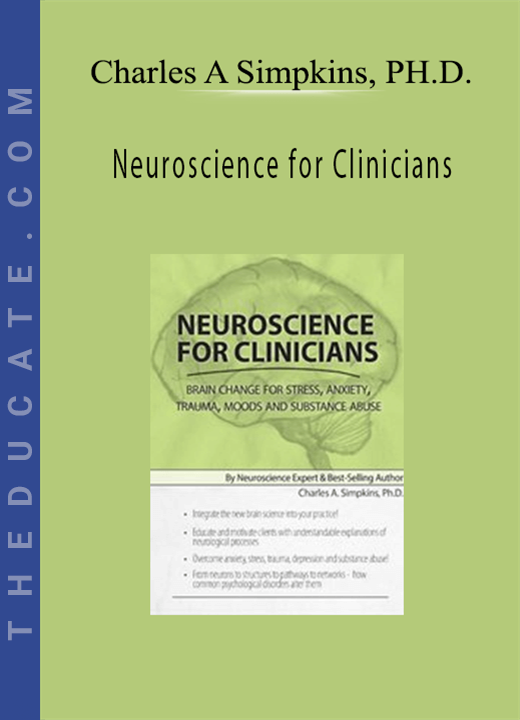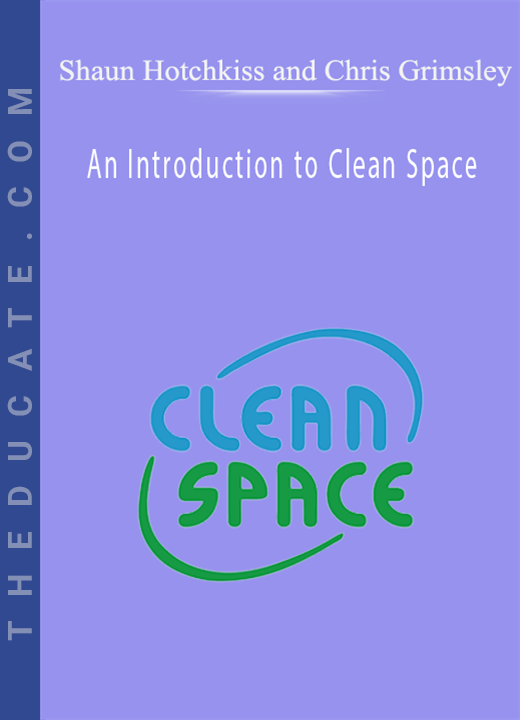Description
Neuroscience for Clinicians – Charles A Simpkins, PH.D.
Neuroscience has given us incredible insights into the workings of the brain and its connection to our mental health. And recent research reveals that neuroplasticity takes place all through life, so you can offer hope for real change no matter how long your client has suffered.
This recording will connect complicated science with your clinical practice, and transform how you view and work with traumatized, stressed, addicted, anxious, and depressed clients!
Discover how and where neuroplasticity occurs, and ways to use it therapeutically. Participate in enjoyable learning experiences that provide you with the clear principles and background you need for utilizing neuroscience in your work. Draw on multiple modalities to overcome resistances, activate creative responses, and turn problems into potentials. Add new dimensions to each therapy session and initiate change using top-down, bottom-up, and horizontal methods that can be creatively individualized.
Leave this program as the most informed clinician you can be, and feel confident in bringing the latest findings from neuroscience into your treatments!
- Communicate how an understanding of neuroscientific research and neurological processes can help mental health professionals improve clinical outcomes.
- Establish the interrelationship of depression and anxiety and communicate how this information can be used in relation to treatment planning.
- Employ psychoeducation techniques that improve engagement in therapy by making neuroscience and neurobiology understandable for clients.
- Analyze how neural pathways regulating stress and reward are related to mental health disorders, and connect this information to your utilization of therapeutic interventions to reduce stress and manage addiction.
- Evaluate the relationship between memory malleability and trauma and communicate how this information can be utilized therapeutically to help clients cope with traumatic memories.
- Investigate how mindfulness and meditation impact the nervous system and articulate how mindfulness interventions can be used in your treatment plans for depression.
- Tour through the Brain: What clinicians need to know from neurons to structures, to pathways, to networks
- See brain structures in 3-D
- How the brain processes top-down, bottom-up, and horizontal
- The interplay of mental health and key nervous system structures, functions, and pathways
- Work with implicit and explicit memories
- How key pathways inform clinical interventions:
- Pain Pathway
- Reward Pathway
- Fear-Stress Pathway
- Nervous System Networks and the Social Brain: We are wired for attunement
- Default Mode (DMN) and Task Mode Networks (TMN)
- Healing attachment
- Activate mirror neurons bottom-up
- Neuroplasticity and Neurogenesis: How the brain can change
- Three timeframes for change
- Neuroplasticity at the synapse
- How to foster neuroplasticity in clients
- Neuroplasticity in action: Exercise your brain!
- Practice Interventions for Healing: Bottom-up, top-down, and horizontal
- Sensory Awareness
- Meditation and Mindfulness
- Body Work
- Unconscious and the DMN
- The Mind-Body Link
- Integrate the Brain into Treatments
- Stress
- How stress alters the nervous system
- Calm the stress/fear pathway
- Develop alert/relaxed attention for better coping
- Trauma
- Foster confidence with yoga
- Malleability of memories and clinical implications for treating trauma
- Reconsolidate implicit memories
- Anxiety
- The anxious brain reaction
- Work top down/ bottom up/ horizontally
- Calm the limbic system bottom up with movement
- Soothe the insula through meditative sensory awareness
- Deconstruct sensations mindfully
- Substance Abuse
- Brain areas involved in addictions
- Rewire the reward pathway
- Detach from pleasure and pain
- Prefrontal connections and judgment
- Depression
- The depressed brain pattern
- Effects of yoga and meditation on the nervous system
- Regulate the limbic system: the prefrontal cortex, cingulate gyrus and mindfulness
- Unify real and ideal
- Foster joyful relationship through mirror neurons
- Develop compassion and gratitude
- Stress
- 6 Principles for Incorporating the Brain into your Therapy







11 reviews for Neuroscience for Clinicians: Brain Change for Stress, Anxiety, Trauma, Moods and Substance Abuse – Charles A Simpkins, PH.D.
There are no reviews yet.